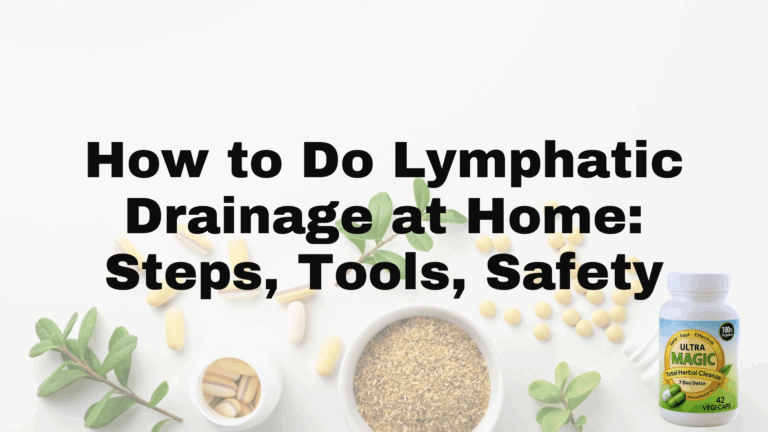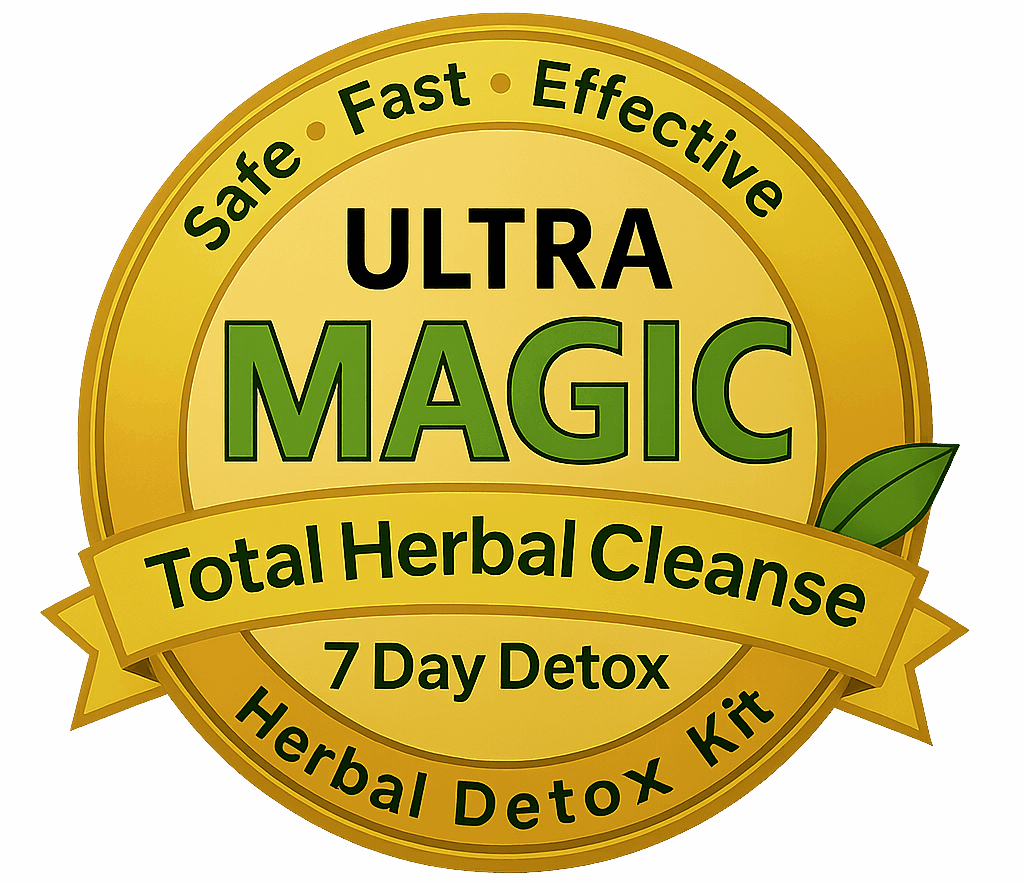
How to Do Lymphatic Drainage at Home: Steps, Tools, Safety
Feeling puffy, heavy, or stiff after long desk days, travel, or a hard workout? Noticing swollen ankles or a bloated face that won’t quit? You’ve probably seen “lymphatic drainage at home” trending—then hit a wall of conflicting advice about tools, pressure, and direction. The truth: you don’t need fancy gadgets or a spa appointment to get real, gentle relief.
With a few minutes of light, methodical self-massage, deep breathing, and simple movement, you can encourage fluid to move toward working lymph nodes, ease tightness, and reduce day-to-day swelling. The key is technique: feather-light pressure, the right order (clear near the nodes first, then the limbs), and consistency. Done correctly, this routine feels calming, not painful—and pairs well with compression if your clinician has prescribed it.
In this guide, you’ll learn exactly how to do lymphatic drainage at home: what it is and why it helps, when to skip it or see a professional, the tools that actually matter, and how often to practice. Then we’ll walk step-by-step through a full-body sequence (plus a quick face option), add a 10-minute movement finisher, cover aftercare, common mistakes, red flags, and a simple 7-day plan you can follow starting today.
What lymphatic drainage at home is (and why it helps)
Lymphatic drainage at home is a gentle, skin-level self-massage and breathing routine that helps move excess fluid from your tissues toward nearby lymph nodes (mostly in the neck, armpits, and groin). Think light, rhythmic stretches of the skin—not deep pressure. Sessions typically start by “clearing” areas that house lymph nodes, then guiding fluid from the limbs toward those areas, with slow diaphragmatic breathing to stimulate flow.
Why it helps: when the lymphatic system is sluggish or disrupted, fluid can pool and cause swelling, puffiness, and discomfort. Light, strategic strokes can encourage lymph to travel to working nodes, where it’s reabsorbed—reducing fluid retention and easing tightness. Consistency matters: gentle, regular practice beats intense, occasional effort.
Safety check: when to skip lymphatic drainage at home or see a clinician first
Lymphatic drainage at home is gentle, but it isn’t right for everyone. If any of the situations below apply, skip DIY and get cleared by your healthcare provider or a certified lymphedema therapist first.
- Active infection or fever: Including cellulitis; don’t massage when sick or if the skin is hot, red, or tender.
- Blood clots or DVT, or recent stroke: Increased fluid movement can be risky.
- Significant heart disease or kidney failure: These organs may be overwhelmed by increased lymph return.
- Open skin issues: Avoid areas with open wounds, skin ulcers, or edema blisters.
- Cancerous tissue or irradiated skin: Do not massage directly over these areas; follow your oncology team’s guidance.
- Unexplained or rapidly worsening swelling: Get evaluated before doing lymphatic drainage at home.
- Pregnancy or complex medical history: Ask your clinician first.
- Post-cancer lymphedema: Often benefits from lymphatic massage, but start under professional supervision.
If you develop unusual fatigue, headache, or nausea during or after a session, reduce intensity, hydrate, and consult your provider if symptoms persist.
Tools and setup for lymphatic drainage at home (oils, brushes, compression)
You don’t need a suitcase of gadgets—just a calm space and tools that help your hands glide without adding force. The golden rule is gentle, skin-level stretch; everything you use should make that easier, not deeper.
- Light slip (oil or lotion): Use a small amount so fingers glide while pressure stays feather-light.
- Dry brush (optional): On dry skin before a shower, use gentle strokes on limbs to encourage flow; don’t use oil with dry brushing.
- Gua sha or wooden body tool (optional): Only with oil and the lightest touch; avoid bruising or soreness.
- Compression garments: If your clinician has prescribed sleeves/socks, keep wearing them as directed after sessions to manage fluid.
- Clean, comfortable setup: Warm room, relaxed posture, and easy access to the areas you’ll work helps you stay consistent.
How often to do at-home lymphatic drainage and how long a session should take
Think “short and consistent,” not long and intense. At-home lymphatic drainage works best as a gentle routine you can repeat regularly. There’s no one-size-fits-all schedule—follow your clinician’s guidance if you have a diagnosis—but plan brief, unhurried sessions that prioritize technique over time on the clock.
- Repeat each step 10–15 times to keep pressure light and rhythm consistent.
- Total time depends on how many regions you include; targeted areas take less time than full-body.
- You might not see immediate results; several sessions may be needed.
- If you wear compression, put it on after your session as prescribed.
Step 1. Start with deep, diaphragmatic breathing to “prime the pump”
Before any strokes, use belly breathing to gently stimulate lymph flow. Deep, slow breaths move your diaphragm like a piston, helping shift fluid toward working lymph nodes. Keep the pace calm and the shoulders relaxed—this should feel soothing, not strenuous.
- Sit tall or lie down; place one hand on your belly, one on your chest.
- Inhale through your nose 4–5 seconds so your belly rises more than your chest.
- Exhale through pursed lips 6–8 seconds; belly falls.
- Repeat 5–10 slow cycles. If you feel dizzy, pause and breathe normally.
- Tip: Breathe “360°” into the side and back ribs for an even gentler pump.
Step 2. Clear the terminus above your collarbones (supraclavicular area)
Before moving fluid from the limbs, “make space” at the base of your neck so lymph has somewhere to go. Use only a skin-level stretch—no digging or sliding. This takes seconds, but it’s the keystone for effective lymphatic drainage at home.
- Position: Relax shoulders. Place finger pads in the soft hollow just above your collarbone near the shoulder.
- Skin stretch: With feather-light pressure, stretch the skin down toward the collarbone, then slightly inward in a gentle “J” motion. Release.
- Repeat: 10–15 times per spot; move a little toward the center and repeat. Do both sides. Cross arms if working both at once.
- Tips: Keep breathing slowly; stop if you feel pain or tingling.
Step 3. Gently open pathways on the sides and back of your neck
With the space above your collarbones cleared, open the side and back-of-neck pathways. Use feather-light, skin-level stretches to direct fluid from the face and scalp downward toward working nodes—never pressing on the throat. This neck work is a key part of lymphatic drainage at home.
- Relax shoulders; head neutral.
- Sides: fingers below ears; stretch slightly toward the back of the head, then down. Release.
- Back: hands below the hairline; stretch inward toward the spine, then down toward the upper back. Release.
- Repeat 10–15 times per spot; avoid the windpipe and any deep pressure.
Step 4. Prepare your underarms and chest (axillary nodes) with light strokes
With the neck clear, open the axillae (underarms) so arm and chest fluid can drain. Use feather-light, skin-stretch motions—never deep rubbing. This area is sensitive: raise the arm slightly, relax the shoulder, repeat 10–15 times, and avoid pressure on breast tissue or healing/irritated skin.
- Position: Opposite hand high in the underarm; stretch up and inward; release.
- Chest wall: Flat fingers on outer ribs; short skin stretches toward the underarm.
- Finish: Light sweeps from upper chest toward the collarbone hollow you cleared.
Step 5. Activate your belly and groin area to support lower-body drainage
Your lower body primarily drains to the inguinal lymph nodes in the groin. A few feather-light stretches across the lower belly and along the groin “make space” before you work the legs. Keep touch skin-deep—no pressing. If you’re pregnant, have a hernia, recent abdominal surgery, or belly pain, skip the abdomen and get cleared before doing lymphatic drainage at home.
- Groin creases: Place finger pads in each groin crease; tiny up-and-in skin stretches; release. Repeat 10–15 per side.
- Lower belly to groin: Hands just above the pubic bone; feather-light downward sweeps toward each groin. Repeat 10–15.
- Outer hip to groin: Flat palm on the outer hip; short skin stretches inward toward the groin. Repeat 10–15 per side.
- Prime the inner thigh: 3–5 ultra-light reminder sweeps from high inner thigh into the groin, then proceed.
Step 6. Drain your arms: hand, forearm, and upper arm toward the underarm
With your underarm already prepared, guide fluid from the hand toward that underarm using feather-light, skin-stretch strokes. Keep the arm slightly elevated and relaxed. Work in short sets (about 10–15 repeats per spot), always directing toward the axilla. Skip any area that’s broken, irritated, or painful.
- Hand and fingers: Light sweeps from fingertips to wrist across palm and back of hand.
- Forearm: Short skin stretches from wrist to elbow, then elbow toward the underarm.
- Upper arm: Gentle strokes along inner, outer, and back upper arm into the underarm.
- Finish and reset: A few light sweeps across the outer chest into the underarm, then the collarbone area you cleared. Put on compression if prescribed.
Step 7. Drain your upper legs: thigh toward the groin
Your thighs primarily drain to the inguinal nodes, so with the groin “opened” in Step 5, guide fluid from above the knee toward the groin in short, feather-light, skin-stretch strokes. Keep your touch superficial and your posture relaxed—no digging or deep rubbing.
- Position: Sit with your foot on a stool or lie down with the knee slightly bent.
- Inner thigh first: Tiny skin-stretches into the groin, 10–15 repeats per small section.
- Front/outer/back thigh: Work upward in short segments from just above the knee toward the groin.
- Finish: Re-clear the groin 3–5 times. Avoid painful areas and do not press on varicose veins.
Step 8. Drain your lower legs: calf, ankle, and foot toward the knee and groin
With the groin and thigh prepared, guide fluid from the feet and ankles up to the knee, then onward toward the groin. Keep the leg slightly elevated, your touch feather-light, and movements slow and rhythmic. Sensitive zones (behind the knee, around the ankle) require extra care—never deep pressure.
- Position: Sit or recline, knee slightly bent, foot supported.
- Open behind knee: Cradle the knee; tiny up-and-in skin-stretches or “J” shapes; 10–15 reps.
- Calf: One hand on shin, one on calf; short upward skin-stretches from ankle to knee in small sections.
- Ankle: Light circles, then gentle sweeps up the lower leg.
- Foot/toes: Strokes from toes and arch to ankle; optional fingertip passes on each toe.
- Finish: 3–5 sweeps from knee toward groin; re-clear groin. Put on compression if prescribed. Avoid varicose veins and any area that’s painful, hot, or red.
Step 9. Optional face routine to reduce puffiness and sinus pressure
If morning puffiness or sinus pressure is your issue, a 2–3 minute, feather-light face sequence can help—always after you’ve cleared the collarbones and neck. Use a tiny amount of slip, keep pressure skin-deep, and route every stroke down the side of the neck to the collarbone hollows. Never press on the throat or painful, irritated skin.
- Under-eyes/cheeks: Sweep from nose toward ear, then down the side of neck to collarbone; 10–15 per section.
- Jawline/chin: Glide from chin to ear, then down neck to collarbone; 10–15.
- Forehead/temples: Move center to temple, then in front of ear down to collarbone; repeat both sides, re-clear collarbones, breathe slowly.
Step 10. Add a 10-minute movement circuit to boost lymph flow (no equipment)
Gentle, rhythmic movement acts like a natural pump for your lymph—muscle contractions and joint rotations help move fluid without strain. After your massage sequence, finish lymphatic drainage at home with this quick, pain‑free circuit. Go at your own speed and stay in a comfortable range.
- 1 minute diaphragmatic breathing, relaxed shoulders.
- Ankle pumps and circles, both sides.
- Calf raises, then toe lifts.
- Mini-squats or sit-to-stands.
- Hip circles with slow weight shifts.
- Standing spinal twists, arms sweeping.
- Shoulder rolls with big arm arcs.
- Elbow “pumps” toward underarms, gentle.
- March in place with easy bounce.
- 1 minute belly breathing + soft heel drops.
Aftercare essentials: hydration, gentle movement, and compression if prescribed
Your work doesn’t end when the strokes stop. After lymphatic drainage at home, simple aftercare helps your body reabsorb and move fluid comfortably. Prioritize water, easy movement, and any compression your clinician has prescribed. Keep everything gentle—this is about supporting a calm, steady flow, not forcing it.
- Hydrate first: Drink a glass or two of water right after, then sip through the day. Limit alcohol and caffeine for several hours since they can act as diuretics.
- Keep moving (lightly): Take a 5–10 minute easy walk, add ankle pumps, and revisit a few slow belly breaths to maintain momentum.
- Use compression if prescribed: Put on sleeves or socks after your session and wear them exactly as directed to help manage fluid.
- Monitor how you feel: If you notice fatigue, headache, or nausea, ease up next time, hydrate, and contact your provider if symptoms persist.
Optional tools and techniques: dry brushing, gua sha, wooden tools, and rebounders
These add-ons can make lymphatic drainage at home easier or simply more enjoyable. None are required. Keep every touch feather-light, avoid broken or irritated skin, and never bruise. If anything hurts, stops you from breathing calmly, or leaves marks, dial it way back or stop.
- Dry brushing (pre-shower): On dry skin, use gentle strokes on limbs toward nearby nodes; no oil.
- Gua sha or wooden tools: With a little oil, glide at skin level only—think “move the skin,” not dig.
- Rebounder or no-bounce alternative: Light bouncing supports rhythmic flow; if you don’t have one, march in place.
Common mistakes to avoid with lymphatic drainage at home
Lymph work is subtle. Too much force, the wrong order, or rushing can stall flow—or irritate sensitive tissue. Keep your touch feather‑light, your breathing slow, and your sequence precise. Avoid these pitfalls whenever you practice lymphatic drainage at home.
- Using deep pressure or fast strokes: Stay at skin level with slow, rhythmic moves.
- Skipping “clearing” near nodes first: Always open collarbones, neck, underarms, and groin before limbs.
- Working in the wrong direction (or over the throat): Guide toward nearby nodes; never press on the windpipe.
- Massaging over red, hot, infected, or wounded skin (or with DVT, fever, cancer/radiation): Get medical clearance first.
- Ignoring sensitive zones: Behind the knee and underarm need extra‑light touch; never bruise.
- Ditching compression or expecting instant results: Be consistent and wear prescribed garments after sessions.
When to pause and call a professional (red flags and next steps)
DIY lymph work should feel light and calming. If symptoms worsen or you spot warning signs, pause lymphatic drainage at home and contact a clinician. Cleveland Clinic advises calling your provider when swelling progresses or new areas get puffy or tight.
- Rapidly increasing or new swelling: Arms, legs, belly, or tight joints.
- Signs of infection: Red, hot, tender skin or any fever.
- Skin damage: Open wounds, ulcers, or edema blisters—do not massage.
- Persistent side effects: Ongoing fatigue, headache, or nausea after sessions.
- Serious conditions present: Blood clots/DVT, stroke, heart disease, kidney failure.
- Cancer-related areas: Don’t massage over cancerous or irradiated tissue.
Next steps:
- Stop and support: Pause, hydrate, elevate limb, apply prescribed compression.
- Call your provider: If no improvement after several sessions, ask about alternatives or a trained lymphedema therapist.
A simple 7-day at-home lymphatic drainage plan you can follow
Use this gentle, repeatable plan to build consistency without overdoing it. Each session stays feather-light, starts with diaphragmatic breathing, clears the collarbones/neck first, then targets the area you’re working. Repeat strokes 10–15 times per spot, move slowly, and put on prescribed compression after. Hydrate before and after, and finish with the 10‑minute movement circuit if you have time.
- Day 1 – Reset (Upper body focus): Belly breathing; clear collarbones/neck; prepare underarms/chest; drain both arms; brief face option; easy walk.
- Day 2 – Lower-body prep: Belly breathing; clear collarbones/neck; open groin/lower belly; drain upper thighs only; re-clear groin.
- Day 3 – Lower legs + ankles: Belly breathing; clear collarbones/neck and groin; open behind knees; drain calves, ankles, feet; finish knee→groin.
- Day 4 – Active recovery (short): Belly breathing; re-clear collarbones/neck; 5 light sweeps per key area (underarms, groin); movement circuit only.
- Day 5 – Full upper body: Belly breathing; collarbones/neck; underarms/chest; thorough hand→underarm drainage; optional face sequence.
- Day 6 – Full lower body: Belly breathing; collarbones/neck; groin; thighs; behind knees; calves/ankles/feet; finish knee→groin; light walk.
- Day 7 – Integrate + assess: Short total-body “clear” (collarbones, neck, underarms, groin) plus 1–2 tight areas; movement circuit; note changes.
Notes:
- Keep every touch skin-level; never bruise or press on the throat.
- Skip any red, hot, painful, or wounded areas; pause and call a clinician for red flags.
Wrap up and next steps
You now have a complete, gentle system you can rely on: clear near the nodes first, breathe deeply, guide fluid with feather‑light strokes, and finish with a few minutes of easy movement. Keep sessions short and consistent, use compression if prescribed, and skip DIY when red flags show up. Revisit the 7‑day plan whenever swelling, stiffness, or puffiness creeps in, and adjust the focus to the areas that need it most. The goal isn’t force—it’s rhythm, order, and repeatability.
Start today: choose one region, take five calm minutes, and notice how you feel afterward. If you want a fuller reset—or you’re on a timeline—pair your routine with Ultra Magic Detox’s 7‑day permanent cleanse: maximum‑strength herbal formula, made in the USA, discreet shipping, and a 30‑day guarantee. Learn more at Magic Detox, track your results for a week, and build from there. Your body will tell you you’re on the right path.



